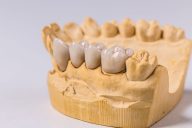RESTORATIVE TREATMENT
Caries – Esthetic obturations
Caries
Due to the prevalence of sugar in our diets and modern eating habits, tooth decay has become a growing concern.
In fact, the American Dental Association states that tooth decay is one of the most common chronic diseases affecting both children and adults.
It is characterized by the appearance of dark discolourations or cavities on the tooth surface, which lead to the loss of hard dental tissue.
To maintain a healthy, bright smile and prevent the need for more invasive procedures such as root canal treatment or extraction, it is crucial to remove the decayed tooth tissue and restore it with a filling (obturation).
Caries progression
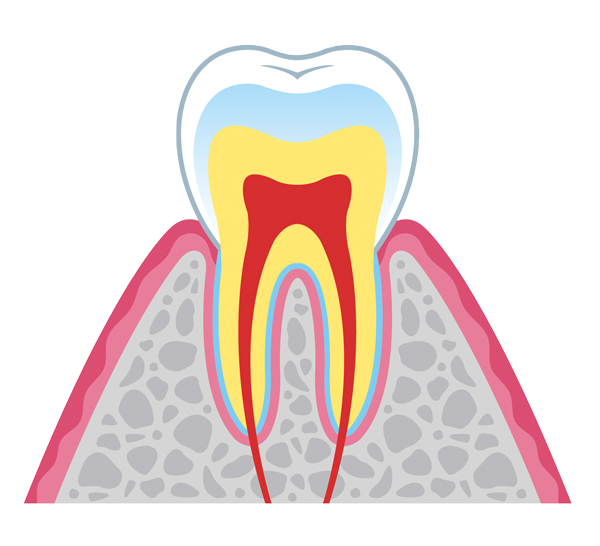
Healthy tooth
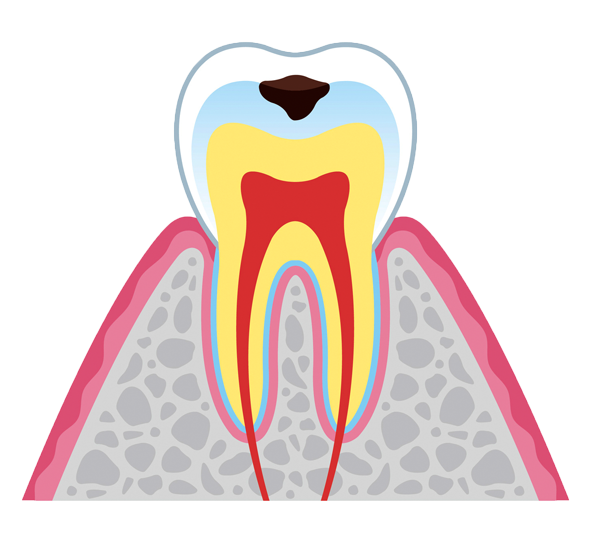
Enamel caries
(Surface)
No complains
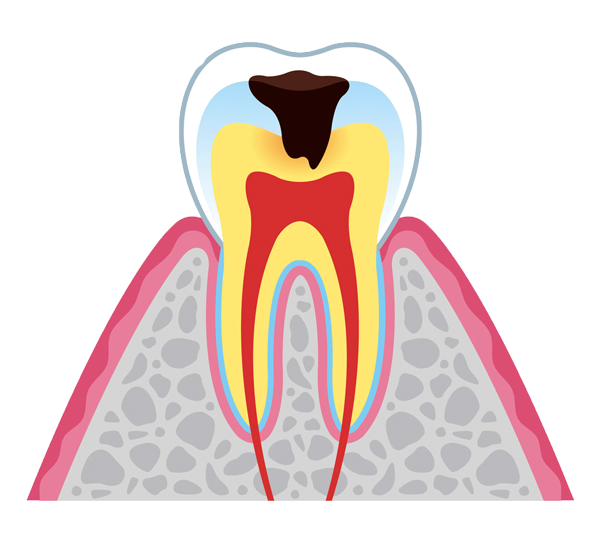
Dentinal caries
(Deep)
Sensitivity / pain to hot/cold/sweet

Pulpitis
(Pulp inflammation)
Severe pain

Periapical granuloma
(Root apex inflammation)
With / without symptoms
Esthetic obturations
If a cavity is detected when you come in for your check-up, we will schedule a treatment that works with your schedule.
The treatment includes the following steps:
- Numbing the area to prevent pain.
- Removing all decay from your tooth and cleaning the area before placing the filling.
- Applying a tooth-colored composite to fill in the missing tooth structure with biomimetic techniques.
- Hardening the composite material, contouring / polishing and bite check to ensure your obturation will match its predecessor.
One filling usually takes no more than 30-40 minutes, and you can leave our office the same day and return to your regular activities.
Inlay / onlay (overlay)
They are restorations used tinstead of traditional composite resin dental fillings.
Inlays are restorations that are fitted into the tooth while the cavity is still within the confines of the tooth.
Onlays, on the other hand, are are prefered as a restoration when some parts or all of the chewing surface need to be replaced.
They are laboratory-processed, imparting them with wear-resistant and stain-resistant properties.
Inlays and onlays can also be matched with the tooth’s natural color and produced with very intricate details such as grooves and special tinting.
They can be made of porcelain, zirconia, or resin materials.
Advantages
- Are less likely to discolor over time as compared to tooth-colored resin fillings.
- Inlays allow for preservation of as much healthy tooth structure as possible and can serve as an excellent alternative to a crown when the damaged area is minimal.
- Inlays are custom-made by the dentist to match the specific tooth preparation, unlike composite fillings which may shrink over time and develop leaks.
- Dental inlays are superior at sealing teeth to prevent bacterial invasion, making them the preferred treatment option for cavities located between teeth.
Endodontic treatment – Root canal treatment

Periapical lesion


Removal of infection

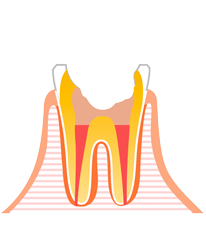
Disinfection and obturation of the canals

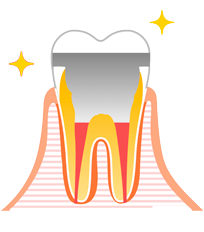
Tooth restoration
Root canal treatment
When tooth decay becomes severe, it can reach the nerves and roots of your tooth, causing sensitivity and pain. If left untreated, it can lead to complications such as abscesses or cysts and eventually tooth extraction.
Root canal treatment is a procedure that removes the infected dental tissue and pulp, which can alleviate pain and prevent the spread of infection or decay, allowing for the tooth to be saved.
The root canal treatment comprises the following steps:
- Administration of local anesthesia to numb the entire treatment area and ensure patient comfort.
- Placement of rubber dam to enhance patient comfort and maintain a clear, bacteria-free field during the procedure.
- Access to the infected pulp by creating an opening in the tooth using a drill. This procedure is painless, although some pressure may be felt.
- Removal of decay from the root canal and disinfection of the area before sealing the canals.
- Sealing of the tooth with a composite filling to prevent bacterial penetration and protect the inner structure of the tooth.
* In situations where a significant amount of dental tissue is missing, the restoration process may involve placing a post to support the tooth structure, followed by the placement of a crown to ensure long-term durability and health of the tooth.
Following the root canal, patients may experience soreness and swelling in the affected area, which typically subsides within 3-7 days. Once healed, pain and sensitivity are alleviated.
How long does it take for
a root canal treatment to finish?
Depending on the severity of the infection it can take from a single appointment or divided into several ones.





